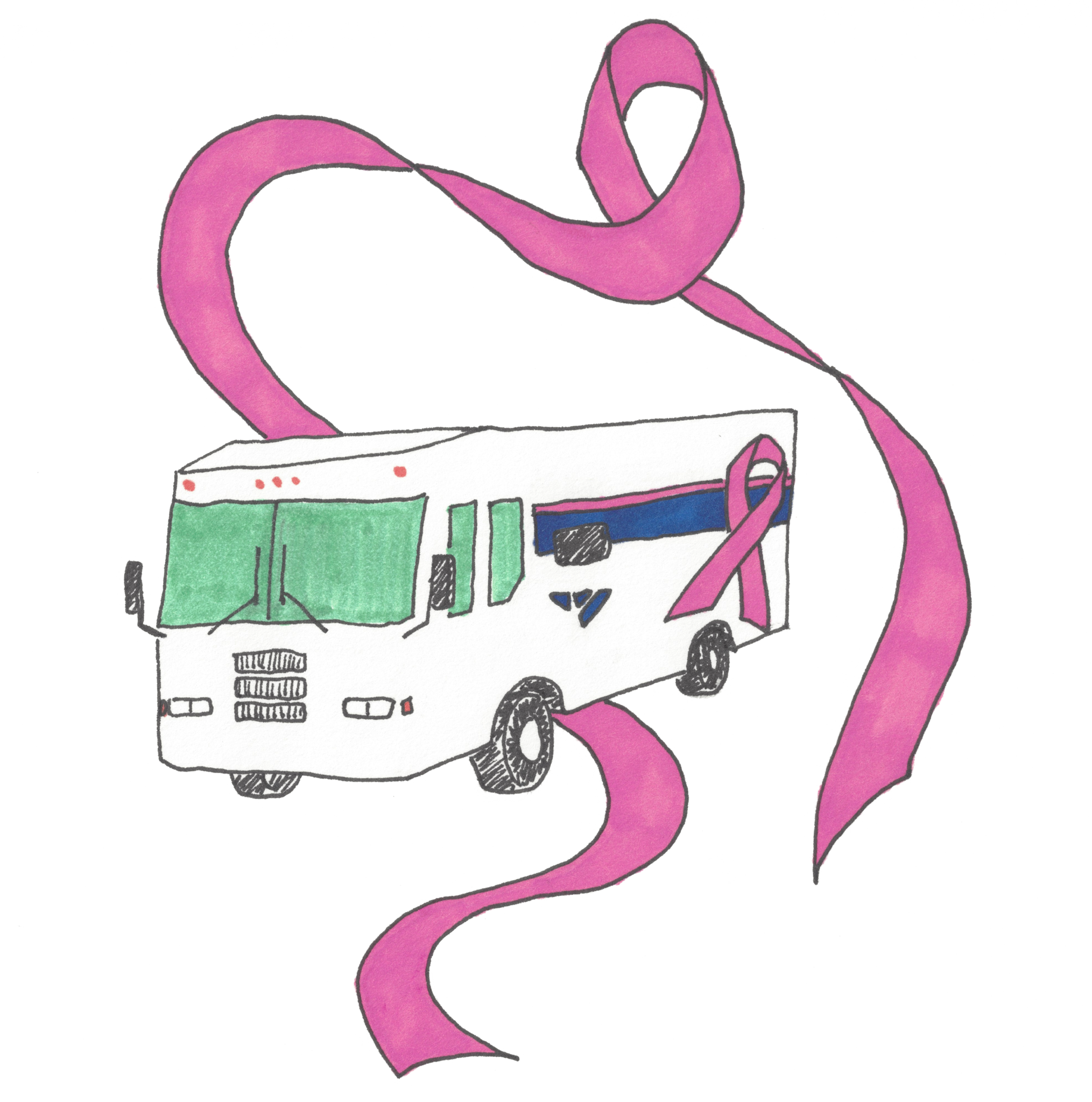
Giovanna Truong
Since 1987, Yale New Haven Health has dispatched mammography vans — vehicles that provide breast screening services — in local communities to address accessibility barriers to screening. This year, they have launched the van’s fourth model, which is the first in the country to offer three-dimensional mammography and ultrasound exams.
When the COVID-19 pandemic first hit, the YNHHS canceled elective procedures and shut down outpatient services. As a result, many people in the area had to forego breast screenings, including women over the age of 40, who should typically get preventive mammograms once a year. When it comes to breast cancer, tumors can progress before causing symptoms. By the time they become apparent, it can be more difficult to intervene — making early diagnosis lifesaving. But with a backlog of patients in the system and widespread fears of contracting COVID-19 in hospitals, fewer women than ever are getting screened. For this reason, the mammography van has become increasingly necessary.
“We hope that this will help especially those patients who are in some of the specific communities that are being more affected by COVID, who are possibly among those delaying their imaging the most,” Maryam Etesami, service chief of breast MRI in the Department of Radiology & Biomedical Imaging at the School of Medicine, told the News.
As part of safety procedures to protect the staff and patients from COVID-19, the van is equipped with a temperature-sensing tablet that detects whether someone is running a fever before they go into the van’s exam rooms. In addition, technicians — who normally staff the van in groups of three — are always wearing PPE from head to toe, with hand sanitizer dispensers readily available all around.
According to Jacquelyn Crenshaw, manager of breast imaging at YNHH, all of the technicians who work in the van have been trained to perform both mammography screenings and ultrasounds — both of which take place inside the vehicle while it is parked.
“Equal access to health care is a key tenet for a healthy society,” Melissa Durand, assistant professor of radiology and biomedical imaging at the School of Medicine, told the News. “The van makes it that much easier for people to have access to state-of-the-art breast cancer screening because it can go to places that might be easier for patients to get to, or be less intimidating to walk into, compared to say our main hospital site.”
Durand explained that the first screening a patient undergoes is typically the mammogram. If any abnormalities are detected in this exam, a follow-up ultrasound is performed to evaluate the anomalous region more closely.
Liva Andrejeva, breast imaging fellowship program director at YNHH, said that the van is also driven by the technicians themselves.
“It’s like driving a truck basically, and then you have to know how to refuel it, you have to know how to park it correctly and obviously you don’t want to get into an accident with it because it is multimillion dollar machinery,” Andrejeva said. “I have a lot of respect for our technicians for not [only] doing the imaging, but also for driving the van.”
Although the van has not begun its rounds yet, Crenshaw said that once it hits the road, the team plans to go all over the state.
Crenshaw added that the van has been effective at expanding access to screening for both traditionally underserved communities and people who might not get screenings due to their busy schedules.
“In the van, it only takes an hour to do these exams, whereas it might take some people multiple hours or half a day to physically go somewhere and get their screenings,” Crenshaw said.
The fact that the van has both 3D mammogram and ultrasound machines makes it technologically equivalent to the more traditional stationary YNHH facilities, Crenshaw explained. Unlike previous vehicles, this new model can also send the images in real time to YNHH computers for radiologists to evaluate.
According to Durand, during 3D mammograms, the patient’s breast is compressed while a camera moves in an arc, taking several images. These images are then put together to reconstruct a three-dimensional view of the breast from top to bottom, allowing the radiologist to scroll through images and visualize the region in 1-millimeter slices, Durand said.
“Women with dense breast tissue are at higher risk for breast cancer because they have a higher fibroglandular tissue to fat ratio in their breasts,” she said. “The more breast tissue a person has, and the less fat they have in their breasts, the easier it is for that tissue to either hide a cancer or overlap on itself and mimic an abnormality.”
Etesami pointed out, however, that the screenings offered in the van are primarily preventive — for patients who are not experiencing any symptoms. Those who do feel pain or a lump are encouraged to go to the YNHH facilities to be diagnostically evaluated by a radiologist present.
While the mammography van is not currently taking walk-in appointments, screenings can be scheduled online.
Maria Fernanda Pacheco | maria.pacheco@yale.edu







